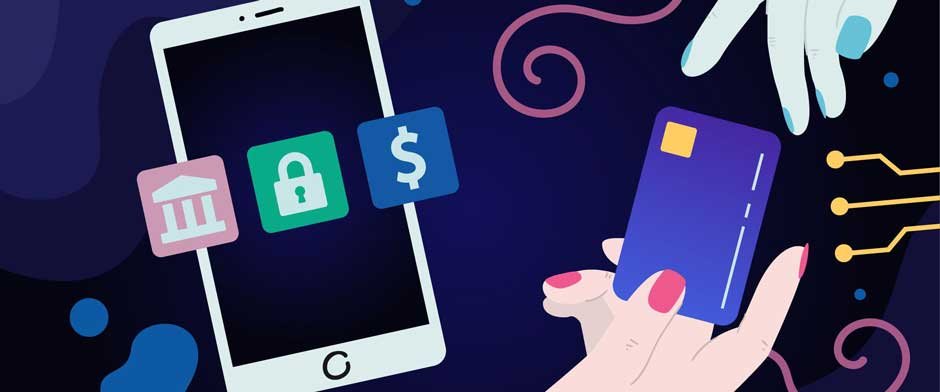Ensuring the security of financial mobile apps in a world dominated by digital transactions is paramount. With the increasing prevalence of cyber threats, it’s imperative for developers and financial institutions to fortify their applications against potential vulnerabilities.
This guide explores key strategies to enhance security measures in financial mobile apps, safeguarding user data and fostering trust in an ever-evolving digital landscape.
Robust Authentication Protocols
To fortify financial mobile apps, a robust authentication system is indispensable. Implementing multi-factor authentication (MFA) adds an extra layer of defense, requiring users to verify their identity through multiple means. Biometric authentication, such as fingerprint or facial recognition, further augments security by uniquely tying a user’s identity to their mobile device.
This multi-tiered approach not only thwarts unauthorized access but also provides users with a seamless and convenient experience. By integrating advanced authentication methods, financial apps strike a balance between enhanced security and user-friendly accessibility, ensuring that the protection of sensitive financial data doesn’t come at the expense of user convenience.
API Management Platform: A Shield for Integration
Integration of third-party services in financial apps enhances functionality but introduces potential vulnerabilities. An API management platform acts as a robust shield, ensuring a secure and controlled data exchange between the app and external services. This centralized control facilitates monitoring, access restriction, and rapid response to any suspicious activities, fortifying the app’s overall security posture.
By implementing an API management platform, developers not only optimize the performance of the app but also establish a secure framework for collaboration with external services. This proactive approach to third-party integrations ensures that the app remains resilient against emerging threats, providing users with a seamless and secure financial experience.
Encrypted Communication Channels
Secure communication channels are the backbone of a resilient financial app. Employing end-to-end encryption ensures that data transmitted between the user’s device and the server remains confidential. This prevents unauthorized access and mitigates the risk of interception, guaranteeing the integrity and privacy of sensitive financial information.
In essence, the adoption of cutting-edge encryption technologies not only safeguards user data but also establishes a robust shield against potential breaches, reinforcing the app’s commitment to upholding the highest standards of data security in the rapidly evolving landscape of digital finance.
Regular Security Audits and Updates
Frequent security audits are vital to identify and address potential vulnerabilities. Regular app updates introduce new features and also patch security loopholes. By staying proactive in monitoring and updating, developers can stay one step ahead of cyber threats, providing users with a more secure financial app experience.
This ongoing commitment to vigilance not only fortifies the app against emerging threats but also showcases a dedication to continuous improvement and user safety. Users can trust that their financial app isn’t just a static tool, but a dynamic, evolving platform designed to meet the challenges of an ever-changing digital landscape.
User Education and Awareness
Empowering users with knowledge about potential security risks is crucial. Users should be educated on safe practices, such as avoiding public Wi-Fi for financial transactions and recognizing phishing attempts. Implementing in-app alerts and notifications can also keep users informed about potential threats, fostering a proactive approach to security.
By cultivating a security-conscious user base, financial institutions and app developers create a collaborative environment where users actively contribute to the protection of their own data. This shared responsibility enhances the overall security posture and also establishes a sense of trust and partnership between users and the financial institutions they’re entrusting with their sensitive information.
Continuous Innovation in Security Measures
Continuous innovation is key to staying ahead of evolving threats. Developers should invest in research and development to explore emerging technologies that can further bolster the security of financial mobile apps. Technologies such as behavioral analytics, machine learning, and advanced threat detection mechanisms can enhance the app’s ability to detect and thwart sophisticated cyber threats.
By embracing a culture of innovation, financial institutions can demonstrate a commitment to staying at the forefront of security trends, reassuring users that their financial data is protected by the latest and most robust technologies available.
Global Collaboration for Cybersecurity Standards
As financial apps operate in a globally connected environment, collaboration on cybersecurity standards is imperative. Financial institutions, developers, and regulatory bodies should engage in dialogue to establish and promote universal security standards for mobile finance applications. This collaborative effort will ensure a consistent and high level of security across borders, reducing the vulnerabilities associated with varying security standards.
By fostering a global commitment to cybersecurity, the financial industry can collectively build a more resilient ecosystem that safeguards user data, instills confidence, and establishes a secure foundation for the future of digital finance. This concerted global approach not only enhances the overall security posture but also reinforces the industry’s dedication to creating a trustworthy and interconnected financial landscape in the face of evolving cyber threats.









